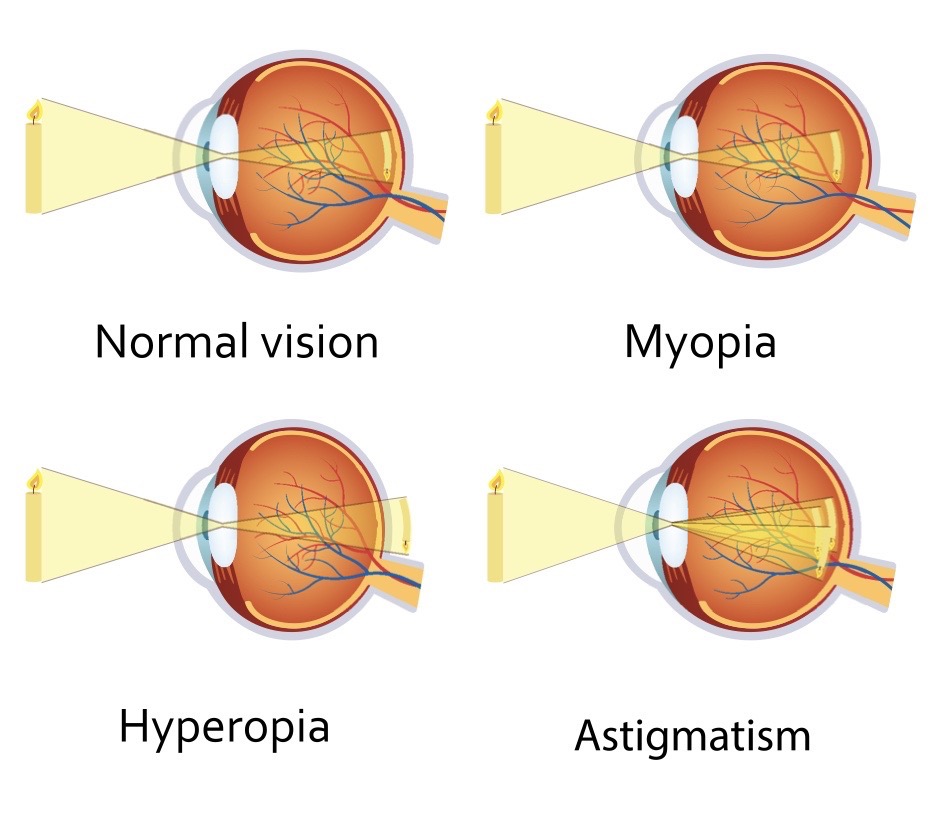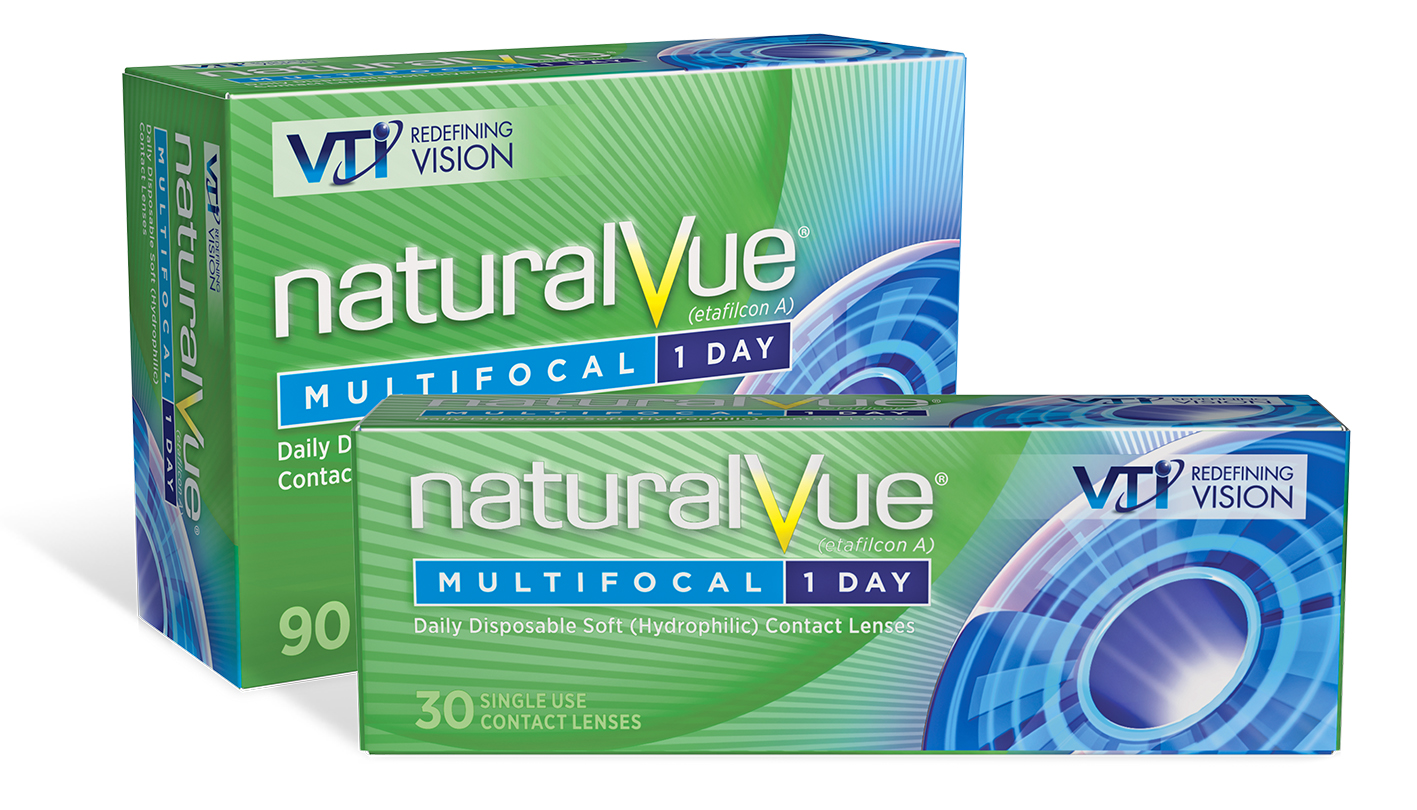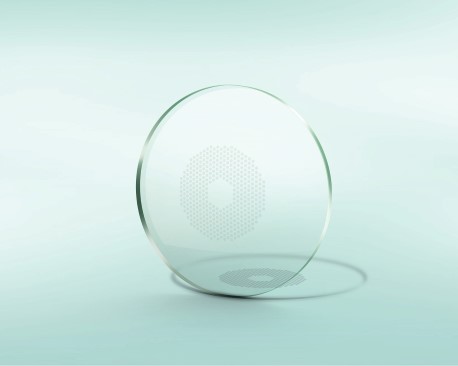Myopia – ‘shortsightedness’ or ’nearsightedness’ is where the distance vision is worse than the near. Normally, light is focused to the level of the retina, in myopia, the light is instead focused to a point in front of the retina. As myopia increases, there is physical growth of the eye where the length of the eye increases (this is termed axial length elongation). The point of focus goes further away from the retina as the eye grows.

Myopia is on the rise. A study shows myopia prevalence in children in the UK has more than doubled in the last 50 years6. More than 50% of the global population will develop myopia by 20504. In the past, low levels of myopia were deemed the norm, just like normal levels of hypermetropia (longsightedness) and astigmatism where it poses little or no risk to eye health. The lower degrees of myopia were described as ‘physiological myopia’. It has long been known that higher levels of myopia (typically higher than -5.00DS) poses greater risk of developing other eye conditions, including sight threatening ones. This is classed as ‘pathological myopia’.
A paper published by an Ophthalmologist2 in 2012 changed our view of myopia. What we now believe is that there is no level of myopia that can be described as ‘physiological’. This is to say that even low levels of myopia increase the risk of certain ocular conditions. The statistics show someone with just -1.00DS myopia has double the risk of developing glaucoma, cataract, retinal detachment and myopic maculopathy. From -3.00DS to -5.00DS there is tripled risk of glaucoma and cataracts and 9 times the risk of retinal detachment and myopic maculopathy. Bearing in mind that this range was previously thought to be within the ‘physiological myopia’ bracket. Above -5.00DS, the risk of retinal detachment goes up to 20 times and for myopic maculopathy goes up to an alarming 40 times risk. Myopic maculopathy is 1 of the top 5 causes of blindness among working age people in the United Kingdom1.
The strong evidence provided by research tells us that myopia at any degree increases the risk of eye disease. The greater the degree of myopia, the greater the risk of sight threatening eye disease. We now need to be very serious in actively reducing the progression of myopia from as early as possible.
Myopia control
Glasses are prescribed for myopia to correct vision however they do not prevent progression. There are various methods to help slow the progression of myopia, these include:
Bifocals or progressive addition spectacle lenses– These are lenses similar to glasses used in adults for presbyopia, a near addition is provided to reduce the amount of accommodation needed for close work. Use of this type of correction in myopic children can help to reduce the rate of myopia progression.
Soft multifocal contact lenses– These contact lenses are intended for use for adults with presbyopia but their use in children and teenagers with myopia has shown to reduce the rate of myopia progression.
Orthokeratology- with rigid gas permeable lenses. These are overnight wear lenses that mould the central corneal shape to provide corrected vision throughout the day. The effect of the corneal re-shaping causes a peripheral defocus in the peripheral retina. This method has shown to be effective in slowing the myopic growth of the eye3. For more information, please see the Orthokeratology page.
Pharmacological– daily use of low dose atropine drops have proven to be an effective method for myopia control. This form of the drug is neither available nor licensed for use in Europe.
MiSight® lenses– These are specialized soft contact lenses produced by CooperVision® specifically designed for myopia control. Currently, this lens type is the only one to be licensed for myopia control treatment. It has just become available to a select number of practices in the United Kingdom and we are one of them.
An initial study by CooperVision® has already shown really positive effects. The study consisted of a 3 year trial of 144 myopic children, half wearing the MiSight® lens and the other half wearing a normal daily soft lens. Results showed that with the MiSight® group, there was a 59% reduction in myopia progression. This is very encouraging stats which works equally well if not better than Orthokeratology.
They are daily disposable lenses with ‘ActivControl’ myopia management technology. There are 2 treatment zones within the lens to defocus part of the image in front of the retina rather than behind. This effect helps to slow the growth of the eye. Unlike other lenses, the amount of defocus is the same at all the prescription powers available.
NaturalVue lenses- These multifocal contact lenses are daily disposable soft lenses developed by Visioneering Technologies, Inc (VTI). The lenses are designed for both myopia control and presbyopia. The lens has a centre distance design with ‘neurofocus optics’ giving an ‘Extended Depth of Focus’ (EDOF). There is rapid progression of ‘plus’ power starting immediately from the centre of the lens going out to the optic zone of the lens. This creates a ‘Virtual Pinhole Aperture’ which provides an extended depth of focus giving clear central vision. At the same time, the increasing plus power of the lens provides the all-important peripheral myopic defocus; the element that we believe is key to achieving myopia control.

An initial retrospective case study was published in 20188. This involved 32 patients aged between 6-19 years with a wearing time of between 6-25 months. It was found that 81.25% had shown complete halting of myopia progression. The authors continued the study and additional data showed continued to minimise myopia progression9. 153 children were followed up for 6 to 59 months. The data showed that at each 6 monthly interval there was approximately 0.9D decrease in myopia progression compared to the rate of progression of children prior to wearing the NaturalVue lenses. This equated to around 90% decrease in progression.
MiYOSMART- The Defocus Incorporated Multiple Segments (DIMS) spectacle lenses have now been approved in the UK for myopia control. Hoya have incorporated the technology to develop the MiYOSMART lens. The technology was invented by Dr Chi-ho To from the School of Optometry from the Hong Kong Poly technic University.

The lens has a 9mm central clear zone with the distance refractive correction to provide clear central vision. Outside of this area are multiple segments which are tiny lenses or ‘lenslets’ or ‘dimples’ of 1.03mm in size. They are interspersed amongst the periphery of the lens to provide +3.5D myopic defocus thereby delivering a simultaneous 50:50 spilt of normal refractive correction and myopic defocus.
A study by Lam et al10 involving 183 children aged between 8-13 years of age, roughly half the children were corrected with the regular single vision spectacles lens and the other half with the DIMS lenses. Myopia progression was assessed over 2 years in both groups.
The results showed:
The MiYOSMART lens is a long awaited alternative treatment option for myopia control. It can be used even in conjunction with soft lens myopia control lenses for dual myopia control therapy.
https://youtu.be/JHsLfobb8Z8
Which is the best option for my child?
There are several factors that we need to consider in deciding the appropriate treatment option. We first have to look at the child’s refractive error as effectiveness of certain lenses will be limited by the level of myopia and astigmatism. We also need to consider the child’s ability to wear and handle certain lenses. Lifestyle choices such as sporting activity also plays a big role when deciding which to go for. Dual therapy which combines several myopia control options can be considered especially when there is evidence of uncontrolled myopia progression or strong family history. Ultimately, an initial assessment by one of our Optometrists will be required to make the decision and this may include the use of drops to dilate the pupils for further assessment.
Preventing the onset of myopia
Research shows that the prevalence of myopia is lower in children who spend more time outdoors5,7. More encouragement of outdoor activities is recommended especially for children with a strong family history of myopia.
References: